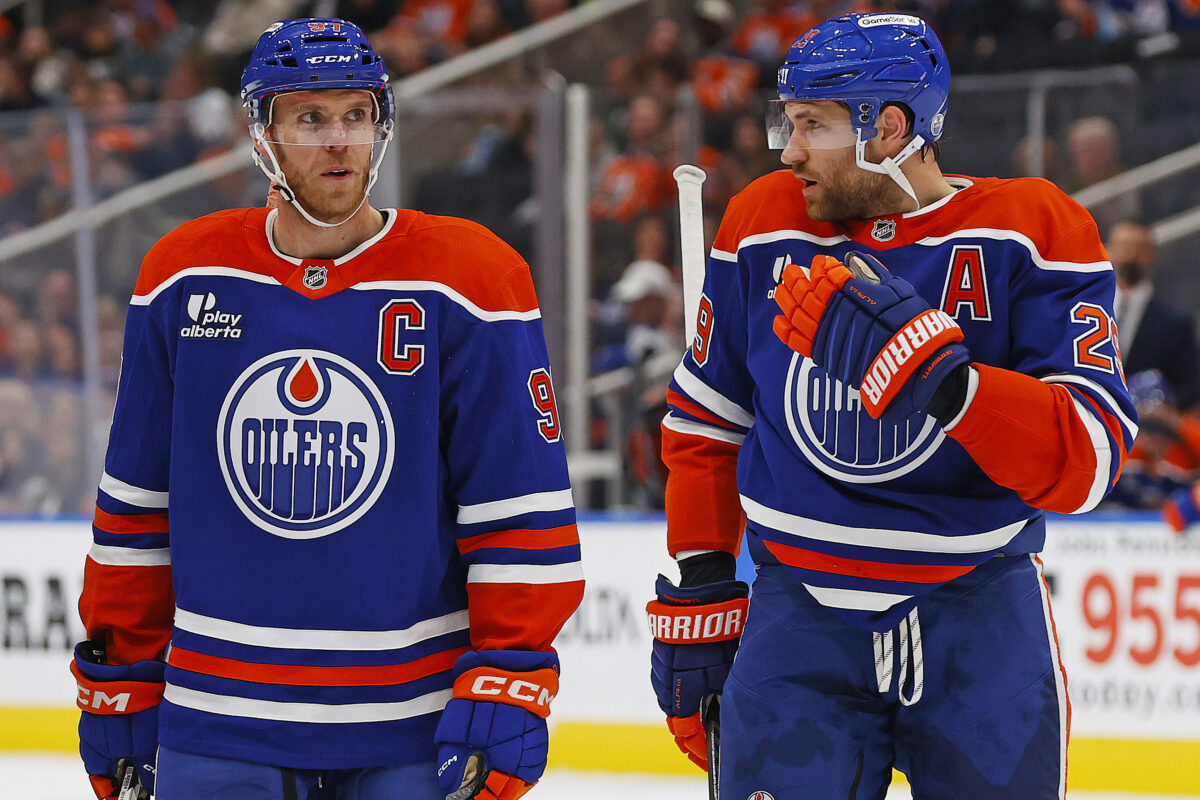For years, the Edmonton Oilers’ narrative was simple: Connor McDavid and Leon Draisaitl were transcendent talents, and the supporting cast was good but not deep enough. That equation has officially flipped this season.
Entering 2025–26, even with Zach Hyman starting on long-term injured reserve (LTIR), the Oilers boast what may be the deepest, most versatile forward group of the McDavid era. Suddenly, Edmonton has the luxury of turning a crowded depth chart into a winning, cap-compliant lineup.
Last season, the Oilers seemed to have a deep forward group, but with the disappointing seasons from Jeff Skinner and Viktor Arvidsson, along with the season-long injury to Evander Kane, what looked good on paper didn’t exactly translate to the ice. But that was then. This is now. The decisions Oilers general manager Stan Bowman makes over the next few weeks will define the team’s success this campaign.
The Oilers’ Overloaded Depth Chart: A Mix of Star Power and High-End Bargains
What makes the forward corps unique is the mix of proven top-end firepower, middle-six versatility, and high-upside youth—all assembled despite a maxed-out salary cap.
Top-End Core: Draisaitl remains a 50-goal, 100-point threat, while veteran Ryan Nugent-Hopkins brings elite two-way structure and play-driving ability at the age of 32.

Net-Front Firepower: With Hyman recovering, Jack Roslovic is on a critical $1.5 million audition (or professional tryout contract), providing power-play scoring alongside veterans like Andrew Magiapane and Adam Henrique.
A New Physical Edge: The additions of Vasily Podkolzin and Trent Frederic offer a heavier, forechecking presence that the Oilers have long needed, while Kasperi Kapanen adds speed.
The Youth Movement: Prospects Matthew Savoie, Noah Philp, David Tomasek, and Ike Howard are creating genuine, internal competition for ice time—a rarity for the Oilers over the last two decades.
The November 1 Cap Crunch: Who Goes When Hyman Returns?
Depth creates options—and roster headaches. With Hyman recovering from wrist surgery and eyed for an early-November return, Oilers head coach Kris Knoblauch has a firm deadline for finalizing the lineup. When Hyman’s $5.5 million cap hit comes off LTIR, the Oilers will need to shed salary and trim roster spots. The immediate decisions will center on these key players:
- The Prospect: Ike Howard
While Howard had an impressive camp, he was reassigned to the Bakersfield Condors to start the season. When Hyman is activated, the most logical decision is to keep Howard in the American Hockey League (AHL) to get consistent top-line minutes and maintain him as a natural, immediate call-up for injuries. - The Veterans on the Bubble: Janmark and Lazar
This is where the roster surgery gets sensitive.
Mattias Janmark: Janmark has been a good veteran presence in the Oilers’ last two playoff runs. However, his placement on injured reserve early in camp, combined with his $1.25 million cap hit, makes him the most likely sacrifice. Unfortunately, Janmark’s time in Edmonton might be over; he’s an immediate candidate to be moved, waived, or bought out to free up cap space.
Related: Mattias Janmark May Have Played His Last Game for the Edmonton Oilers
Curtis Lazar: Signed for veteran depth, Lazar hasn’t cracked the lineup yet due to the performance of the new acquisitions. As a result, the former Edmonton Oil King Jr. Star seems like an obvious choice to be placed on waivers or traded to create space when Hyman returns.
- The Roslovic Wild Card
If Roslovic’s strong start continues, the Oilers will want to keep him. But managing his $1.5 million cap hit is a problem. If management decides not to keep him, his contract includes a four-team trade clause, which adds a layer of complexity for Bowman should he seek to move him for an asset.
The Payoff: Pressure Off McDavid and Draisaitl
If the Oilers manage the November roster crunch cleanly—moving or waiving the right veterans, using the Bakersfield Condors pipeline effectively, and slotting Hyman back into a top-six role—the payoff will be immense.
For what seems like the first time in the McDavid era, the team will feature a genuine, three-line attack. That depth removes the pressure from McDavid and Draisaitl of shouldering the night-in, night-out offensive responsibility alone. For the organization, it’s the healthiest problem to have: too many good forwards, not enough roster spots—and multiple ways to solve it.
